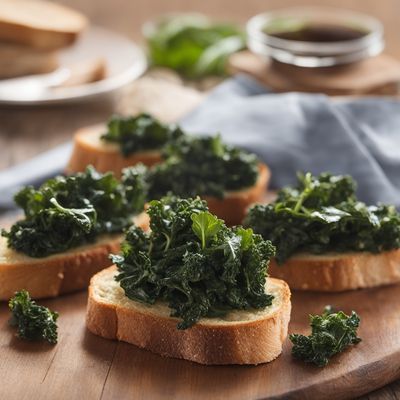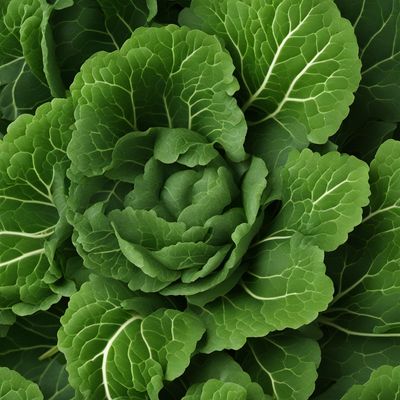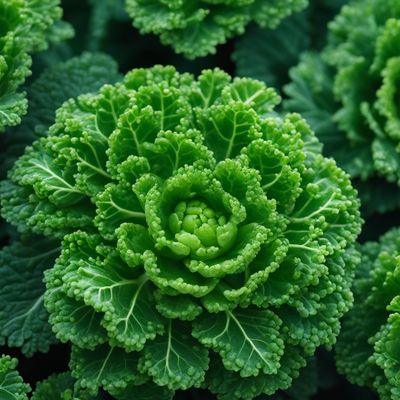
Ingredient
Black kale
The Mighty Leafy Green
Black kale is characterized by its long, dark green leaves with a bumpy texture. It has a slightly sweeter and milder taste compared to other kale varieties, with a hint of earthiness. Its tender yet sturdy leaves make it ideal for sautéing, braising, or adding to soups and stews. It is also commonly used in salads and smoothies for its nutritional benefits.
Origins and history
Black kale originated in Tuscany, Italy, where it has been cultivated for centuries. It has a rich history in Italian cuisine and is a staple in dishes like ribollita and minestrone soup. Over time, it has gained popularity worldwide and is now grown in various regions across the globe. Its dark green leaves and unique flavor have made it a favorite among chefs and home cooks alike.
Nutritional information
Black kale is a nutritional powerhouse, packed with vitamins A, C, and K, as well as fiber and antioxidants. It is low in calories and fat, making it a great addition to a healthy diet. A 1-cup serving of cooked black kale provides approximately 36 calories, 5 grams of fiber, and more than 100% of the daily recommended intake of vitamin K.
How to select
When selecting black kale, look for leaves that are dark green in color and free from yellowing or wilting. The leaves should be firm and crisp, without any signs of sliminess or discoloration. Choose bunches with smaller leaves, as they tend to be more tender and flavorful. Avoid any bunches with yellow or brown spots, as this indicates age or spoilage.
Storage recommendations
To store black kale, wrap it loosely in a damp paper towel and place it in a plastic bag or airtight container. Store it in the refrigerator's crisper drawer, where it can stay fresh for up to a week. Avoid washing the leaves until you are ready to use them, as excess moisture can cause them to wilt faster.
How to produce
Black kale can be easily grown in home gardens or containers. It thrives in cool weather and requires well-drained soil and full sun or partial shade. Sow the seeds directly in the garden or start them indoors and transplant them once they have developed a few leaves. Regular watering and occasional fertilization will help the plants grow vigorously.
Preparation tips
Black kale can be enjoyed in various ways. To prepare it, remove the tough stems and ribs, then chop or tear the leaves into bite-sized pieces. It can be sautéed with garlic and olive oil, added to soups and stews, or used as a base for salads. Massaging the leaves with a bit of salt or lemon juice can help soften their texture and reduce bitterness. Additionally, black kale can be blended into smoothies or juiced for a nutritious boost.
Culinary uses
Black kale is commonly used in Italian cuisine, particularly in dishes like ribollita, a hearty vegetable soup, and pasta dishes. It is also popular in salads, where its sturdy leaves hold up well to dressings and toppings. In addition, black kale can be incorporated into stir-fries, grain bowls, and even used as a pizza topping. Its versatility makes it a favorite among chefs and home cooks alike.
Availability
Black kale is widely available in grocery stores and supermarkets, especially during the fall and winter months when it is in season. It can also be found at farmers markets, where locally grown varieties may be available. It is cultivated in various regions across the United States, Europe, and other parts of the world.
More ingredients from this category
Recipes using Black kale

Macedonian-style Sausage and Kale Pasta
Hearty Macedonian Sausage and Kale Pasta Delight

Decadent Chocolate Fudge Mississippi Mud Pie
Indulge in the Richness of Decadent Chocolate Fudge Mississippi Mud Pie

Figolla - Traditional Maltese Easter Almond Pastry
Deliciously Sweet Almond Figolla: A Taste of Maltese Easter Tradition

Crispy Kale Crostini
Savory Crunch: Crispy Kale Crostini with a Twist




